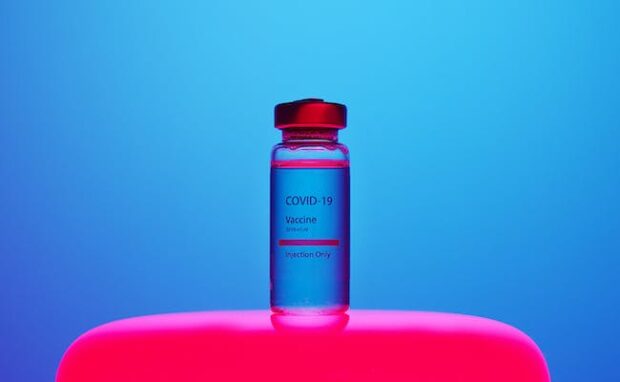Chinese scientists create dry, inhalable vaccines
Researchers from the Institute of Process Engineering (IPE) of the Chinese Academy of Sciences announced an inhalable vaccine. It is a single-dose device that contains a dry powder that alters the immune response to a specific antigen. As a result, it could be more effective and convenient than conventional vaccines.
The invention of vaccines has significantly extended the life expectancy of people worldwide. However, that doesn’t mean we can’t improve the tried-and-tested method. Inhaling vaccines could make inoculation more accessible and convenient for everyone. Also, we’ll spare many kids (and adults) from the needle!
This article will discuss how scientists developed an inhalable dry vaccine and how it works. Later, I will share other innovations in protecting people from diseases.
How does a “dry vaccine” work?

IPE professors Wei Wei, Ma Guanghui, Wang Hengliang, and Zhu Li created a new vaccine platform that contains a dry powder instead of a liquid. The powder is a combination of biodegradable microspheres with protein nanoparticles.
The latter can display multiple antigens, offering an expanded range of vaccine protection. Moreover, the platform’s unique nano-micro composite structure allows lungs to efficiently respond with immune responses.
Antigen-presenting cells absorb these antigen nanoparticles, enhancing the effectiveness of the vaccine. “The components of this nano-micro system used natural proteins and approved polymer materials,” said Professor Wei Wei.
You may also like: AI-powered microscope detects cancer cells
“The effectiveness and safety of the vaccine have been systematically studied in non-human primates, indicating its great potential for clinical translation,” he added. Also, the dry vaccine reduces storage and transportation costs.
The dry vaccine doesn’t have to penetrate your skin with a needle, removing the need for additional syringes during an outbreak. Also, it could encourage more people afraid of needles to take it.
The dry vaccine study draws inspiration from the COVID-19 pandemic. Soon, it could help everyone stay healthy as cases rise in some countries like the Philippines.
Other recent vaccine projects

Scientists have also been using artificial intelligence to further vaccine development. For example, the University of Oxford and Harvard Medical School developed one called EVEscape.
It is an improved version of EVE, a generative model that learns to predict how proteins work based on large-scale evolutionary data across species. However, it struggled to keep up with the coronavirus.
In response, computational biologist Debora Marks and her team rebuilt the old AI into EVEscape. They augmented its mutation prediction feature with biological and structural details of specific viruses.
“We’re taking biological information about how the immune system works and layering it on our learnings from the broader evolutionary history of the virus,” co-lead author Nicole Thadani said.
“By rapidly determining the threat level of new variants, we can help inform earlier public health decisions,” said co-lead author Sarah Gurev. The team posts a biweekly ranking of new SARS-CoV-2 variants found by EVEscape on their website.
The Harvard Gazette said EVEscape’s other essential application is evaluating vaccines and therapies against current and future viral variants. Consequently, it can help scientists design effective treatments that can fight viruses.
You may also like: Artificial DNA to create designer proteins
The LabGenius company also created a namesake artificial intelligence that quickly combines hundreds of thousands of options to produce antibodies. “The only input you give the system as a human is, here’s an example of a healthy cell, here’s an example of a diseased cell,” CEO James Field said.
“And then you let the system explore the different [antibody] designs that can differentiate between them,” he added. Next, the AI chooses more than 700 initial options from 100,000 potential candidates.
Afterward, LabGenius designs, builds, and tests them. Moreover, humans oversee the process by moving samples from one machine to another. It learns from experimental results, increasing the chances of producing better results.
Conclusion
Chinese scientists created an inhalable, dry vaccine that could be more effective, cost-efficient, and convenient than traditional ones. Soon, it could transform the way we protect the world from illnesses.
They tested its response against “co-circulating strains and transmission of the Omicron variant.” As a result, the inhalable vaccine could fight against COVID-19 and other respiratory diseases.
Learn more about this dry vaccine study by reading its Nature webpage. Moreover, check out the latest digital tips and trends at Inquirer Tech.